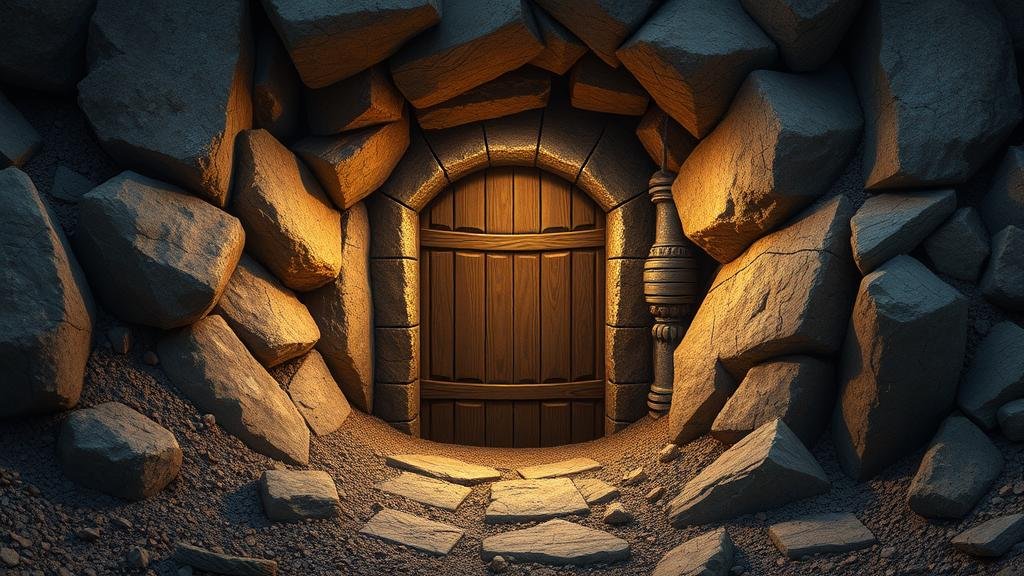The Role of Camouflaged Trap Doors in Protecting Buried Wealth
The Role of Camouflaged Trap Doors in Protecting Buried Wealth
Throughout history, individuals seeking to protect their valuables have employed various methods to secure their wealth from theft and discovery. One particularly fascinating technique involves the use of camouflaged trap doors, engineered to conceal access points to hidden cache locations. This article explores the functionality, effectiveness, and notable historical examples of trap doors specifically designed to safeguard buried wealth.
Understanding Camouflaged Trap Doors
Camouflaged trap doors are concealed access points that grant entry to hidden chambers or compartments where valuables are stored. Often ingeniously designed, these trap doors can blend seamlessly into their surroundings, making them nearly impossible to detect without knowledge of their existence. Typically crafted from materials similar to their environment, they serve as both physical barriers and psychological deterrents to potential intruders.
Historical Context and Applications
The implementation of trap doors for protecting wealth dates back to ancient civilizations. For example, during the Roman Empire, wealthy citizens constructed intricate hidden rooms accessible only through cleverly disguised openings. e trap doors often required specific mechanisms, such as weight-based latches or levers, to open, ensuring that only the wealth owner could access their hidden assets.
In feudal Japan, samurai would bury valuables beneath their homes, utilizing trap doors to create secret vaults. Often, these doorways were masked with tatami mats or wooden planks, further concealing their presence. Such measures became vital during times of civil unrest, reflecting the need for safe storage methods amid conflict.
Design Elements of Trap Doors
The effectiveness of camouflaged trap doors hinges on their design. Key elements include:
- Material Selection: The door must be constructed from materials that match the surrounding environment. For example, wooden trap doors blend well into wooden floors.
- Mechanism Complexity: Simple lever mechanisms can be easily bypassed, so sophisticated locking systems, such as combination locks or pressure-sensitive devices, are often employed.
- Camouflaging Techniques: Techniques like applying paint or covering with debris can help obscure the door further. Using natural elements, such as soil or grass, also aids in hiding outdoor vault entries.
Modern Applications and Innovations
In todays world, the principles of camouflaged trap doors continue to evolve. Contemporary security systems utilize advanced technology to augment traditional methods. For example, modern trap doors may include biometric locks or digital access controls that offer a layer of security beyond physical concealment. These innovations are particularly relevant for high-net-worth individuals looking to protect significant assets, especially amidst increasing concerns of theft and home invasions.
Also, real estate and architectural designs increasingly integrate concealed storage solutions. Homes designed with hidden compartments within built-in furniture not only provide aesthetic value but also enhance security for valuable items.
Challenges and Considerations
While camouflaged trap doors present numerous advantages, there are challenges and considerations worth acknowledging. For example, improper installation or maintenance may lead to the failure of the trap door mechanism when access is required. Plus, the risk of accidental discovery increases if the design does not sufficiently blend into the environment.
Also, legal considerations should be weighed when constructing hidden compartments, especially for those in shared living spaces or communities where zoning regulations may restrict modifications. So, consultation with professionals in architecture and security is recommended to ensure both compliance and efficacy.
Conclusion: Strategic Takeaways
In summary, camouflaged trap doors play a pivotal role in the protection of buried wealth, evolving from historical practices to modern innovations. Their design intricacies, ranging from material selection to security mechanisms, contribute significantly to their effectiveness. Today, as the landscape of threats changes, the traditional wisdom of utilizing concealed access points remains relevant, encouraging individuals to strategize effectively when safeguarding their valuables.
Individuals contemplating the use of trap doors for asset protection should consider the following actionable steps:
- Assess your environment and select materials that will effectively camouflage the trap door.
- Incorporate modern security technology to fortify access systems.
- Consult with professionals to navigate legal considerations and optimize design.
As history demonstrates, the intersection of clever design and strategic thinking ultimately fortifies asset protection efforts, ensuring that buried wealth remains secure against threats.



